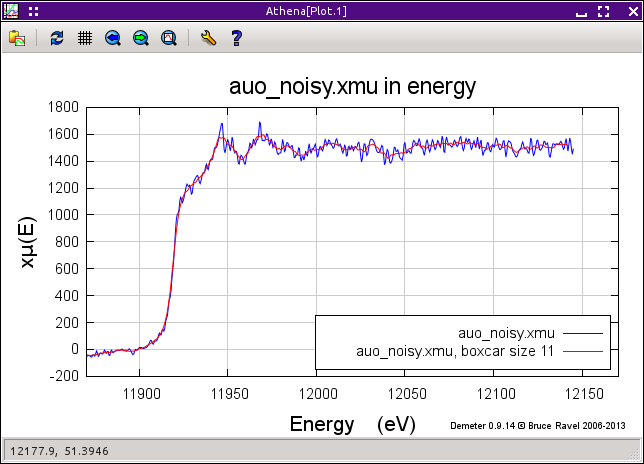Smoothing data
Smoothing data is usually a bad idea. The best way to improve noisy
data is to rethink your samle preparation or measurement procedure
whenever possible. The second best way
is to measure more of it and rely upon the
central limit theorem to work
its magic. Smoothing is usually little more than an aesthetic fix and
it introduces distortions to your data that become serious sources of
systematic uncertainty in any later attempts to interpet the smoothed
data.
The default smoothing algorithm is a boxcar average, implemented as a
generic linear filter using a flat, symetric kernel. The width in
data points of this kernel is the specified parameter. An odd kernel
size is enforced. If you set the size parameter to, say, 12, a value
of 13 will be used.
There is an option for a Gaussian filter, which is also implemented as
a generic linear filter. In this case, you must specify both the
kernel size and the σ of the Gaussian.
The final smoothing option is IFEFFIT's three-point
smoothing algorithm repeatedly to your data. The number of
repetitions is set using the number selection control used to set the
kernel size of the other two options..
One of these days, I intend to implement a Savitsky-Golay filter.
You can overplot the data and the smoothed data using the button on
the left, as shown below. The other button makes a group out of the smoothed data and
places it in the group list.
![[Athena logo]](../../images/pallas_athene_thumb.jpg)

